Cloonnakilla
Houses within 10km of this house
Displaying 15 houses.
Houses within 10km of Cloonnakilla
Displaying 15 houses.
| House name | Description | |
|---|---|---|
| Fort Fergus | A home of the Ross Lewin family in the 18th and early 19th centuries. In 1786 Wilson refers to it as the seat of J. RossLewin. Occupied by Mr Evans in 1814 and by Daniel O'Grady in 1837 and held by Major William Ball in fee in the 1850s, when the buildings were valued at over £32. Bence Jones writes that Major Ball purchased Fortfergus in 1855 in the Encumbered Estates' Court. Weir writes that the house was burnt down in the 1920s. The remaining staff quarters have been turned into a residence and the farm buildings are still in use. | |
| Cragbrien | An 18th century house of the Stacpooles which Wilson notes as "the beautiful seat of Mr. Stacpole" in 1786. It passed to the Stacpoole Mahons in the early 20th century and is still occupied. Matthew Kelly of Cragbrien owned 562 acres in county Clare in the 1870s. |

|
| Mulvihill House | Built by the Mulvilhill family, it was their home in the 18th and 19th centuries. Occupied by Daniel Mulvihill in 1814. Charles Mulvihill was a magistrate in county Clare in 1846. By the time of Griffith's Valuation James F. Clarke was leasing the house from Colonel George Wyndham, when it was valued at £14. The house is no longer occupied. | |
| Ballymacooda | A house valued at £15 at the time of Griffith's Valuation when it was in the possession of Michael Finucane who held it from Nicholas Westby. Passed into the ownership of the Commane family in the 20th century. [Grid reference is approximate] | |
| Clondagad House | A 19th century house, the home of the Whitstone family, who held the property at the time of Griffith's Valuation from Edward A . Gore. It was valued at £12 and described as a steward's house. The house is occupied and well maintained. |
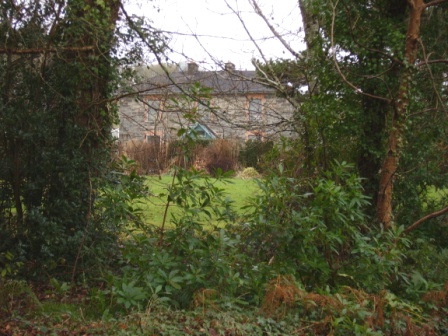
|
| Lismoyle | This house dates from circa 1841 when it was the residence of T. O'Donoghue. At the time of Griffith's Valuation it was the home of Patrick O'Donoghue who held the property from Mary O'Grady. Occasionly used as a shooting lodge by the O'Grady family and it remained in their possession until the 20th century. | |
| Paradise | This was originally a 17th century house situated almost on the shore of the Shannon. In 1786 Wilson refers to it as "Paradise, the delightful seat of Mr. Henn, finely situated on the side of a high hill". It was altered in the 19th century. Many members of the Henn family were involved in the legal profession and lived in Dublin so the family did not inhabit the house much until the second half of the 19th century. In 1814 John Scott was residing in the house and Thomas Arthur in 1837. In the mid 1850s the house was unoccupied and Augustus Arthur was the immediate lessor. It was valued at over £17. The Henns began to reside soon afterwards. IN 1894 Slater refers to Paradise as the seat of Judge Henn. The Irish Tourist Association Survey File of the 1940s refers to rumours of the Colonel's intention to sell Paradise. Destroyed by fire in 1970. |

|
| Cornfield | Occupied by Westropp Ross in 1814 this house was in the possession of Major William Ball by the time of Griffith's Valuation, when the buildings were valued at £48. Later occupied by members of the Dawson family. The house no longer exists but a gate lodge is still extant. |

|
| Ross Hill | Ross Hill House was the home of George Ross Lewin and his descendants until the end of the 19th century. He was the second son of Harrison Ross Lewin of Fort Fergus, High Sheriff of county Clare in 1755. The house is still inhabited. |

|
| Cahercon/Cahiracon | A house situated on the bank of the Shannon, the seat of the Scott family until at least the 1850s. The sale rental of 1854 gives a detailed description of the house which included 16 bedrooms. By the mid 19th century James Kelly held the house in fee. The buildings were valued at over £53. The Honourable Charles William White, second surviving son of Baron Annally, was living at Cahiracon in the mid 1870s and it was a seat of that family in 1894. The Vandeleurs lived here for a short time at the beginning of the 20th century. Bought by the Maynooth Mission to China in 1920 and sold by them to the Salesian Sisters of St John Bosco in 1962. The house later became the centre of Cahercon Community College. Cahercon is now owned by Clareman Paddy Whelan of Limestone Quarries. |

|
| Clifton | Built by the Scotts of Cahiracon for the use of their agents circa 1830s, this house was in the possession of James Kelly by the time of Griffith's Valuation when the house was recorded as unoccupied. It became St Brigid's Convent for postulants of the Columban Sisters in the 1920s and was demolished in 1979. |

|
| Ballyleaan Lodge | Lewis records Ballylane Lodge as the residence of W. Coppinger. At the time of Griffith' s Valuation William Coppinger held in fee at Ballyleaan 142 acres, a lodge, offices and gate lodge. The property was later inherited by the O'Connell family and by marriage passed to John Charles Coppinger O'Connell (later Bianconi) in the 1870s. The mansion house valued at £41 was in the possession of John O'Connell in 1894 and in 1906. Weir writes that the house was completely demolished in 1970. |
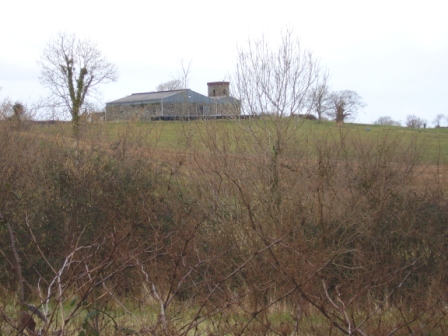
|
| Crovraghan | A house situated on the Wyndham estate, occupied by John Tatlow in 1814 and J. O'Donnell in 1837. James O'Donnell held the house, valued at just over £10, from Colonel George Wyndham at the time of Griffith's Valuation. Later the home of the Cannon family until the 1970s. |
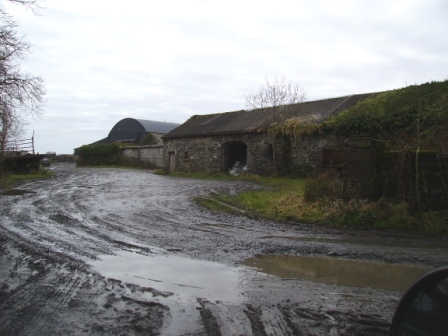
|
| Shore House | The O'Gradys lived at Shore House from at least the 1820s. Jane O'Grady held the house from John Bindon Scott at the time of Griffith's Valuation, when it was valued at £14.10 shillings. Jane O'Grady married Daniel O'Connell of Kilgory. The home of the Hogan family at the end of the 20th century. |
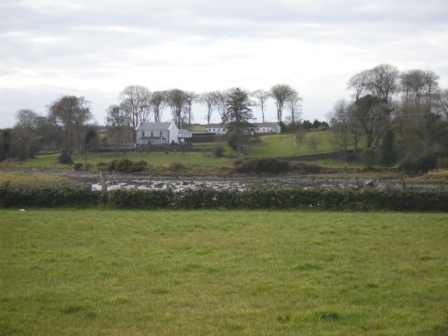
|
| Teermaclane | Home of the Woulfe family in the 18th century, it became a ruin in the early part of the 19th century. |
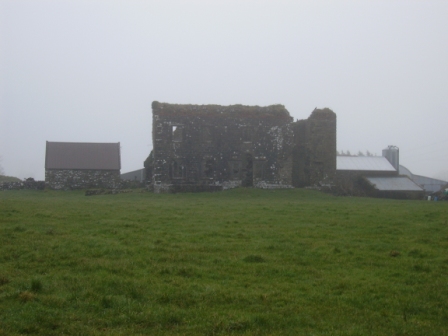
|

